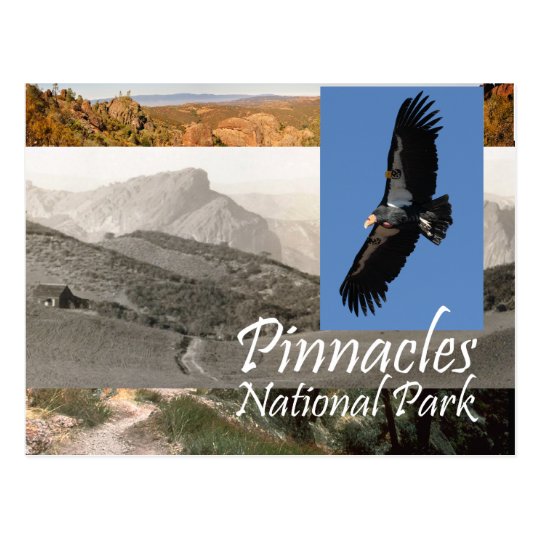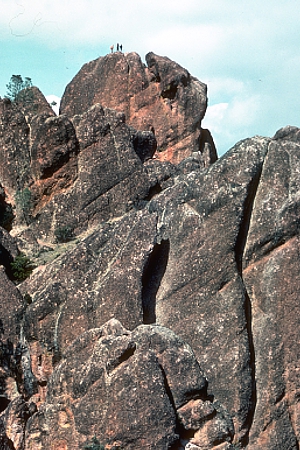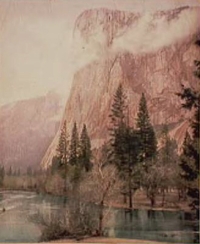
Pinnacles National Park
It was designated a National Monument back in 1908 by Teddy Roosevelt and thought so highly of at the time as a place of natural beauty and national importance that the President and preservationist added that designation to the lands of caves and spires at the same time he saved Muir Woods and the Grand Canyon. But somehow, almost inextricably, Pinnacles has remained a gem among national park sights and somewhat overlooked by natural history and outdoors enthusiasts, both nationwide and regionally as they pass by its doors on the way to more highly attended sites like Yosemite, which worries about overuse all the time, as well as Sequioa and Kings Canyon National Parks.
Sponsor this page. Your banner or text ad can fill the space above.
Click here to Sponsor the page and how to reserve your ad.

Pinnacles Then
Indian tribes have inhabited the area for 10,000 years, so the culture of Pinnacles is bound to both nature and the tribes that inhabited it. The Chalun and Matsun were known to be in the park at the time of European settlement, with about 4,000 members in total. When the Spanish came to settle, they established a mission in Soledad in 1791. One hundred year later, a homesteader by the name of Schuyler Hain came, led tours, and started a preservation effort, which would lead to 2,500 acres being first established as a national monument in 1908.
Of course, throughout each of the eras of the park, pre-European, European settlement, or modern park, the nature of the area remained permanent. Growing from the ground up through volcanic ash to the skies where the bats and condors flit and soar.
The California Condor is the largest bird in North America, with a wingspan up to 23' wide. Condor is a nice way to say vulture, who's primary purpose is to scavenge and consume carrion. It lives up to 60 years. The condor had been in constant decline through the years leading up to a conservation effort in 1987, when all 22 remaining birds in the U.S. were captured, then bred to return to the wild. There are now an estimated 405 condors in captivity and in the wild.
The importance of the condor to Native Americans can not be underestimated, as it plays a part in the beliefs of the Firebird and is part of the storytelling traditions of many tribes, each with their own interpretation of its importance and part in their cultural heritage.
Photo above: A sunset view of Pinnacles High Peak. Courtesy National Park Service. Below: Condor cam at Pinnacles National Park. Courtesy National Park Service.

Pinnacles Now
While they get visitation in the millions (Yosemite gets 3.9 million visitors per year) and hundreds of thousands (Sequioa/Kings gets over 500,000 per year), Pinnacles has historically sat at much less, but it's been growing, up to 393,000 in 2011 when most years in the past twenty it was about 175,000. But that's about to change and it should. Because this land of wonder, both with those volcanic spires culled from a plume 23 million years old that almost make the landscape seem lunar in spots, bats in the caves, and the resurgent condors that fly above its skies, has now been designated a national park by Barack Obama. Time to see what all the fuss is about. And it's closer to the bay and coast, too, only an hour or so from the metropolitan area of San Francisco and Oakland and even closer to San Jose.
Pinnacles National Park encompasses over 26,000 acres to explore, which makes it the smallest of U.S. national parks, but it kind of comes in two halves. You can't get from one side of the park to the other, by car that is, so you have to be prepared to leave the park if on the east side to visit the west. On either side, it's a hiking and nature watching paradise, but of somewhat rugged proportions. There's a visitor center on the east side and a campground, plus those hiking trails galore. And if you want to see big rocks, this is the national park for you. Big rocks abound. Should be their slogan. Condors and bats fly. Might not be quite as good, but it sure is accurate and should be in your visitation plan when going into Pinnacles National Park. Part of the checklist. Take a hike. Look at big rocks. Find the bats and wear a hat. Watch the soar of a 23' wingspan condor take to the skies. And the wonders of this park have been around for ages, as noted in the ode written by the man, Schuyler Hain, who provided tours and championed its establishment around the turn of the 20th century.
Near the Visitor Center - You've got more to choose from here as the Pinnacles Visitor Center, campground, and a much longer drive into the park by road is available. From the Bear Gulch Trail and Day Use Area to the Peaks View and Old Pinnacles, there's more selection and probably the better place to start your visit if this is your first time here.
Near Chapparell Ranger Station - There's less civilization here and the road only goes into the station, then it's time to hike. You can access the Balconies Cave Trail from here, as well as good views of peaks that you may or not be able to climb, depending on your prowess. For most of us, it's gonna be a watching others do something time, but fascinating none the less.
T-Shirts and Souvenirs

Pinnacles National Park T-Shirts and Souvenirs from the official gear of America's Best History.

Pinnacles
Things You Should Not Miss
1. Take the ranger guided tour. They are available in both the east and west sections of the park and provide a good glimpse into the construction, by volcano, and the nature of the California lands which abound in resplendent and moon like wonder around every corner. At this time, most of the tours are held on weekends from March to October (East Side) and June to October (West Side). They include night hikes and campground evening talks, too. Some are hikes, such as the one from the west to the Balconies cave, and some are of the stand and listen variety on topics such as geology.
2. Watch nature. In this busy world of cars and those ubiquitous phones that seem to follow us wherever we go, ... okay, we take them with us, but now's the time to turn that ring tone off and watch the skies. Look for bats and condors, depending on your location.
3. Head out into the wilderness, or near wilderness, and hike a Pinnacles park trail. Thirty miles of them here. Check at the Visitor Center for the one that might fit you best, and take all precautions when hiking here. Trails range from a couple miles to over nine.
Photo above: Pinnacles Trail through a wooded section of the park. Courtesy National Park Service.





